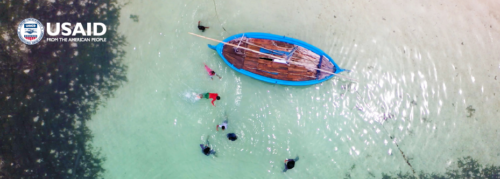Circular Solutions: Case Studies for Small Island, Large Ocean States and their Communities

In Brief
Island communities around the world face unique challenges managing their waste streams—from having limited space for waste and recycling-related infrastructure to managing the logistical complexities and cost of transporting waste off island. As a result, these communities commonly dispose of waste through burning or open dumping, which threatens human health and environmental safety. Approximately 80 percent of litter from small island developing states eventually ends up in the ocean or on coastlines, also affecting the environmental health and tourism that underpin island economies. To address these challenges, USAID Clean Cities, Blue Ocean—the Agency’s flagship global program to combat ocean plastic pollution under the Save our Seas Initiative—supports the development of localized solutions and circular practices for island communities so that materials are reduced, reused, or recycled and retained in the economy for as long as possible.
Background
Inadequate waste management systems are resulting in significant human, environmental, and economic costs, especially on islands where there is geographic isolation and limited capacity to manage waste after it enters the island. These challenges are exacerbated by growing volumes of single-use plastic and tourism waste, combined with limited local solid waste management (SWM) skills and resources, facilities and infrastructure, investment, and connectivity with larger markets–with the smaller volumes of waste and distance from major markets making transporting waste by boat logistically challenging and prohibitively expensive.
As a result of these constraints, island waste is often incinerated or dumped in vacant areas or the ocean where it causes irreparable harm to the marine environment and travels great distances by ocean currents. Without corrective measures, the volume of plastic entering the ocean from island communities will continue to rise and contribute to the global ocean plastics crisis.
Maldives
Though the smallest country in Asia, the Maldives is one of the most geographically dispersed nations in the world. Throughout its more than 180 inhabited islands, waste management is exceptionally challenging given the logistical complexities of such dispersion. Due to a lack of integrated and sustainable waste management systems, many residents openly burn plastics and other waste, resulting in partially burned trash and toxic ash blowing into the surrounding ocean and harmful smoke that threatens community health. Where there are waste disposal sites, they are generally unmanaged and are
a source of breeding for vermin and mosquitoes.
Philippines
The Municipality of Tingloy, in Batangas Province comprises Maricaban (the main island), Caban island, and several other small uninhabited islands. The municipality’s limited funding and resources have a direct effect on waste management services. For example, Tingloy is one of only two local government units in Batangas Province that do not have regular waste collection services. Most plastic waste is burned, buried, or thrown into the sea. The island has junk shops that purchase recyclables (such as cans and paper/cartons), but they do not purchase plastic waste.
The Pacific Islands
In Pacific Island countries like Fiji, The Federated States of Micronesia (FSM), and Papua New Guinea, getting plastics and other recyclable materials off island is logistically and economically challenging. A lack of local recycling facilities and markets, as well as robust collection systems to aggregate materials, means that recyclables and other waste either find their way into the environment or are disposed of in open dumpsites.

